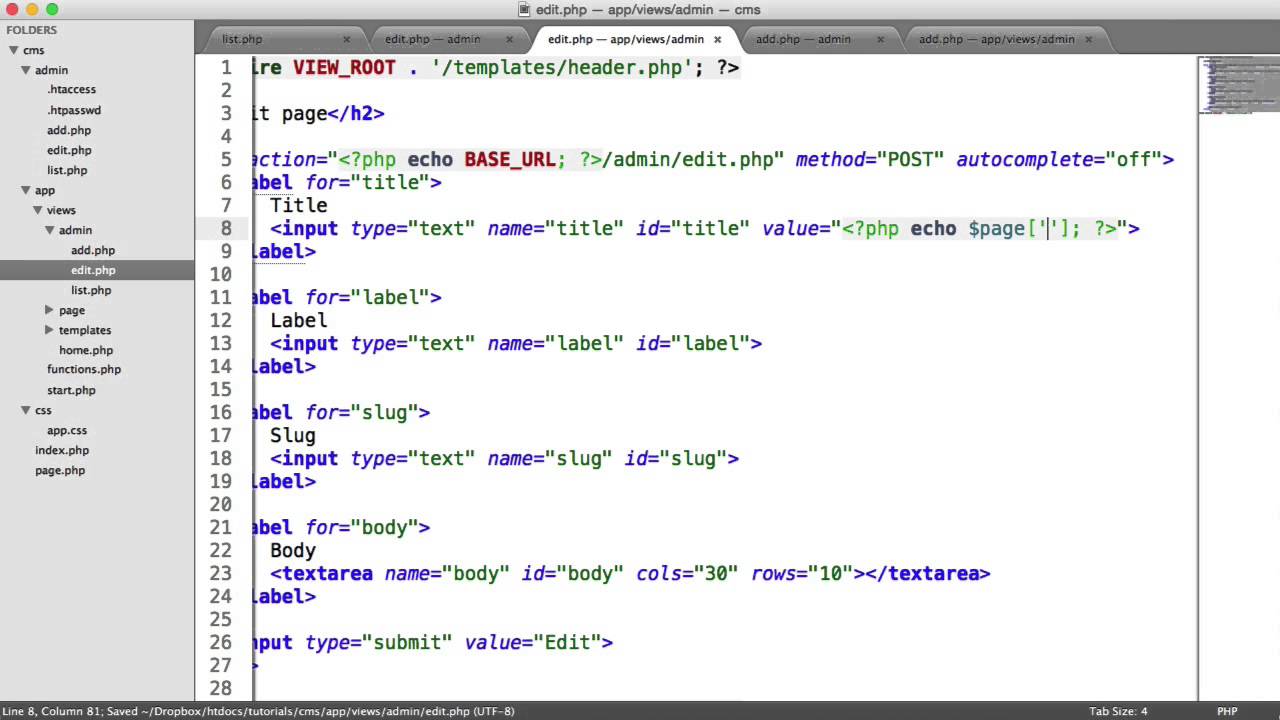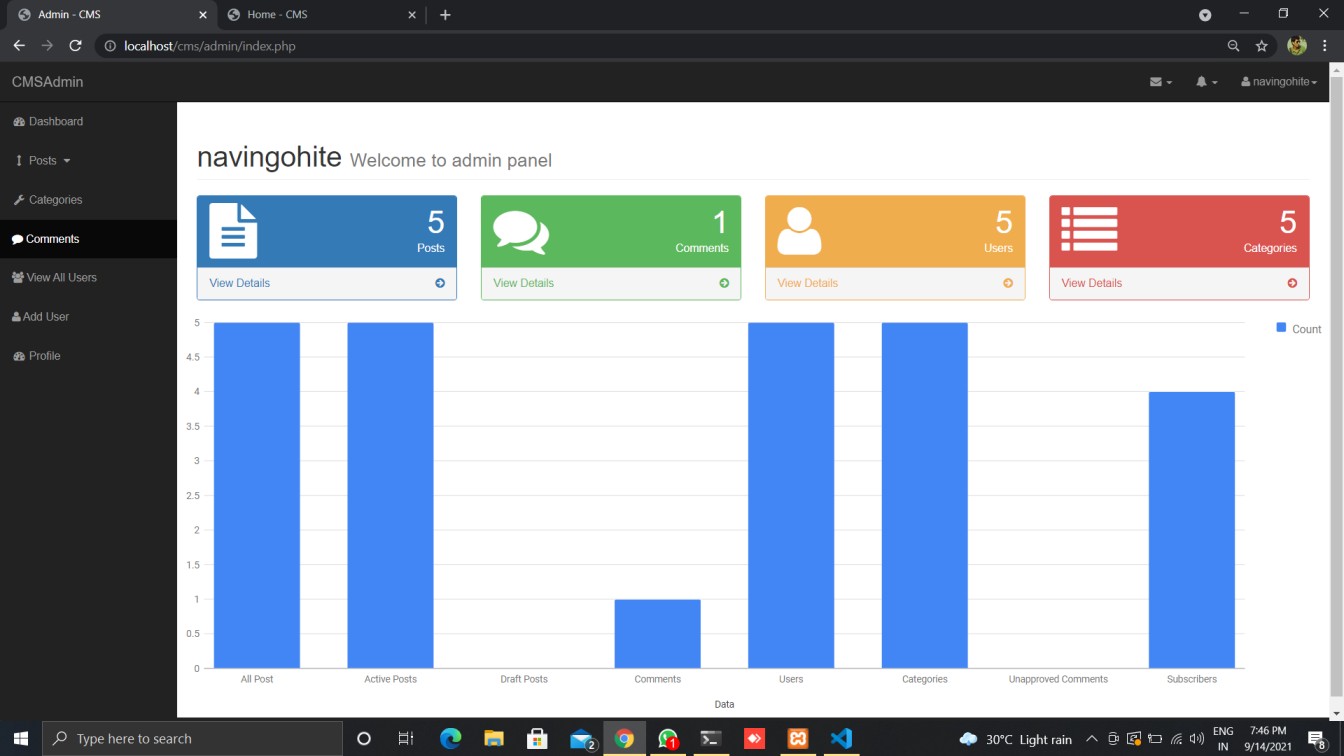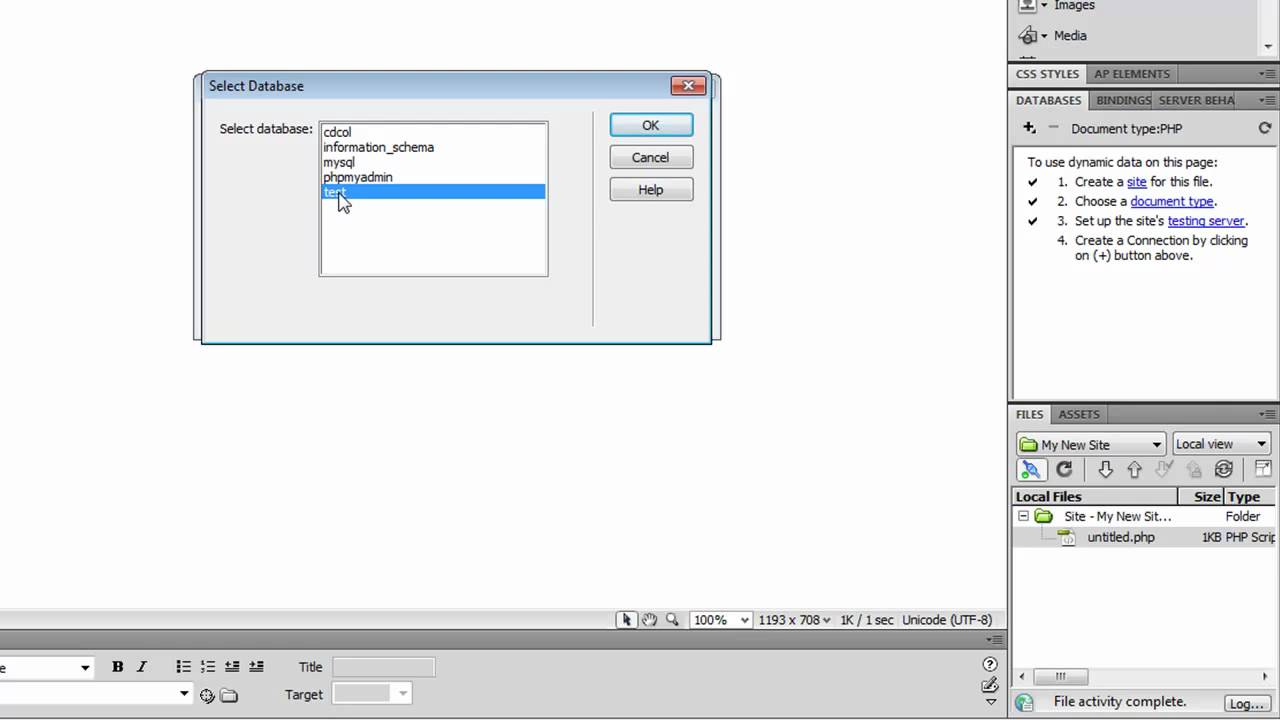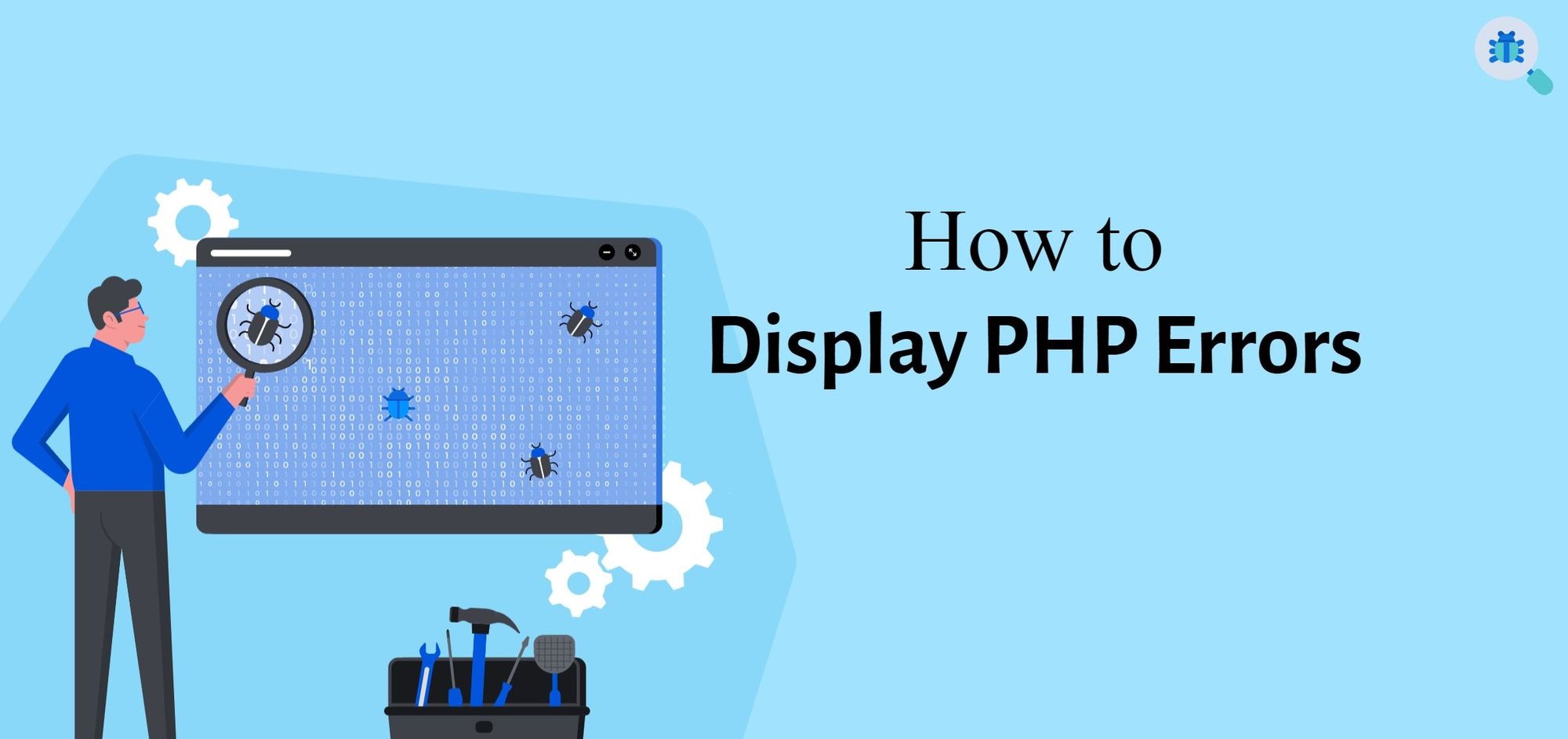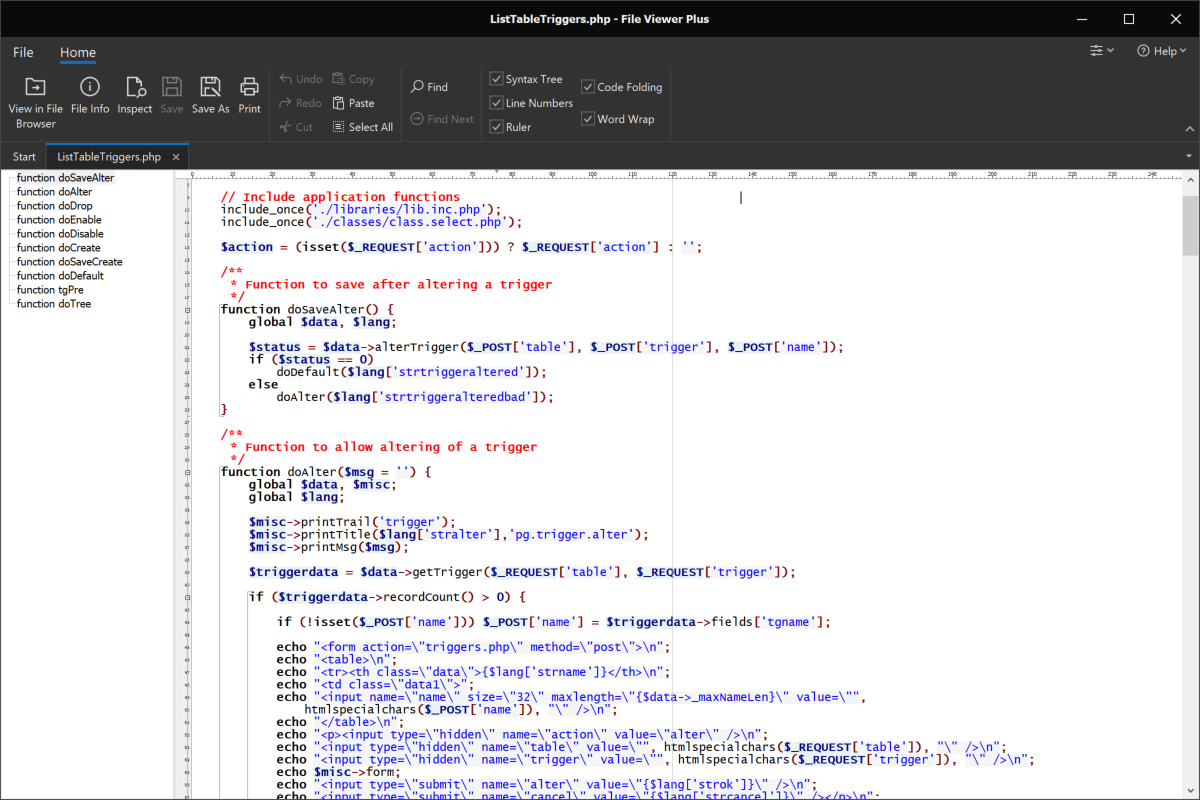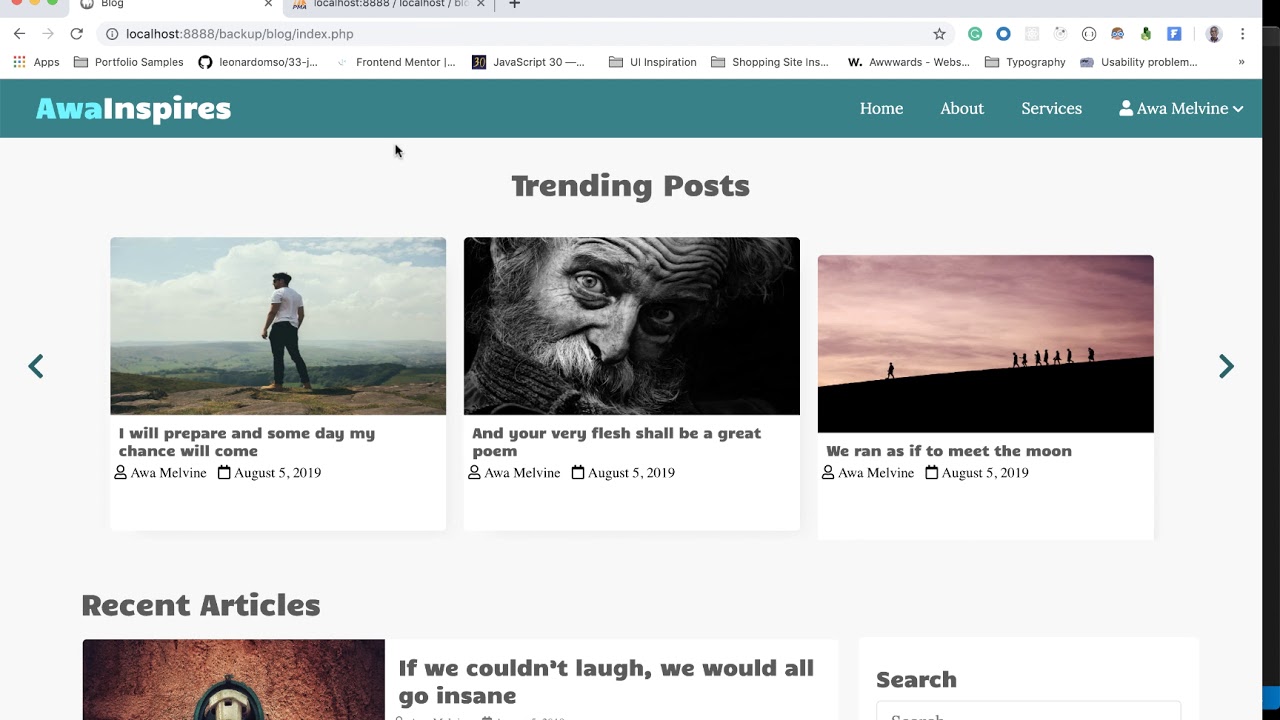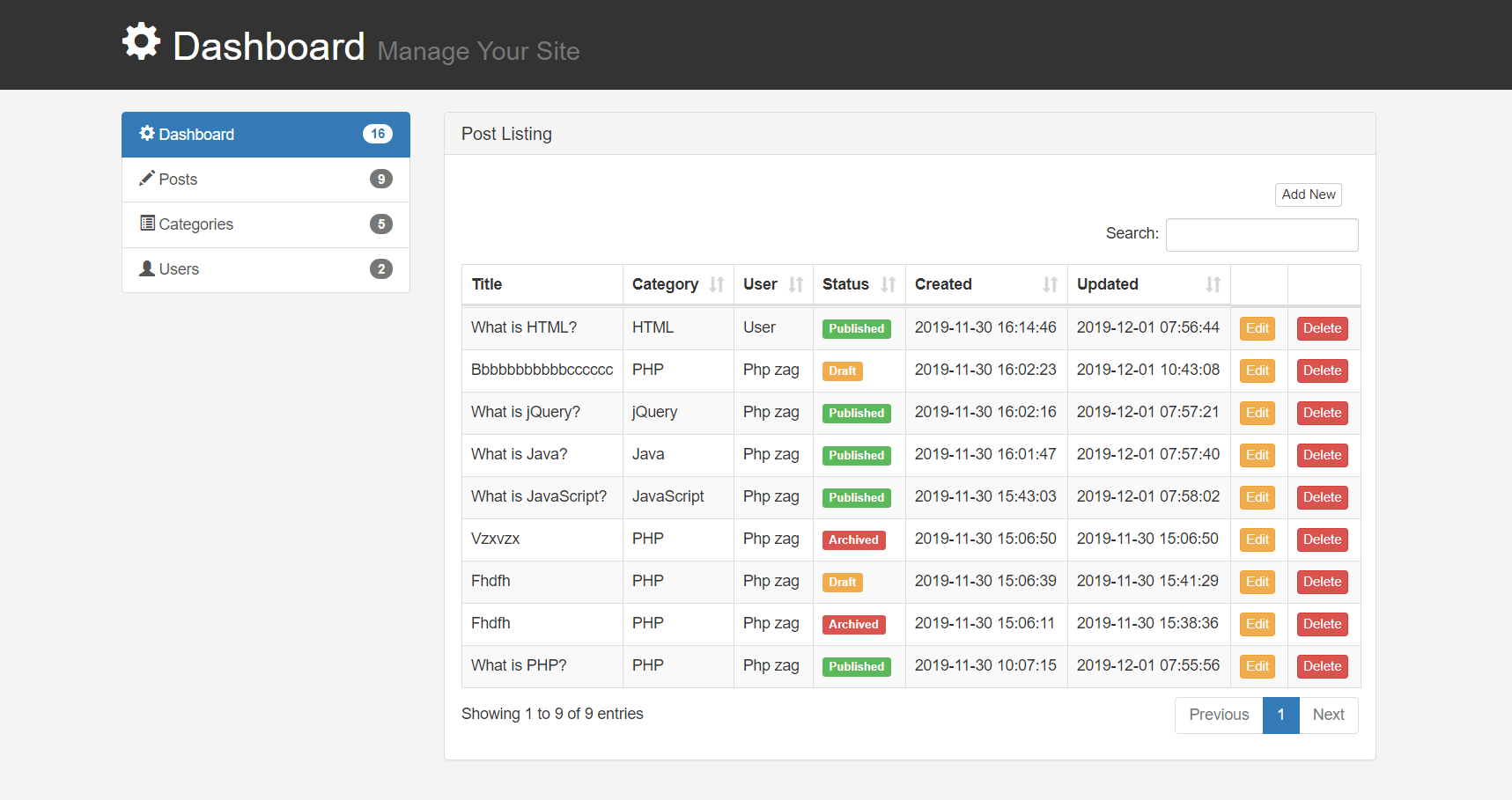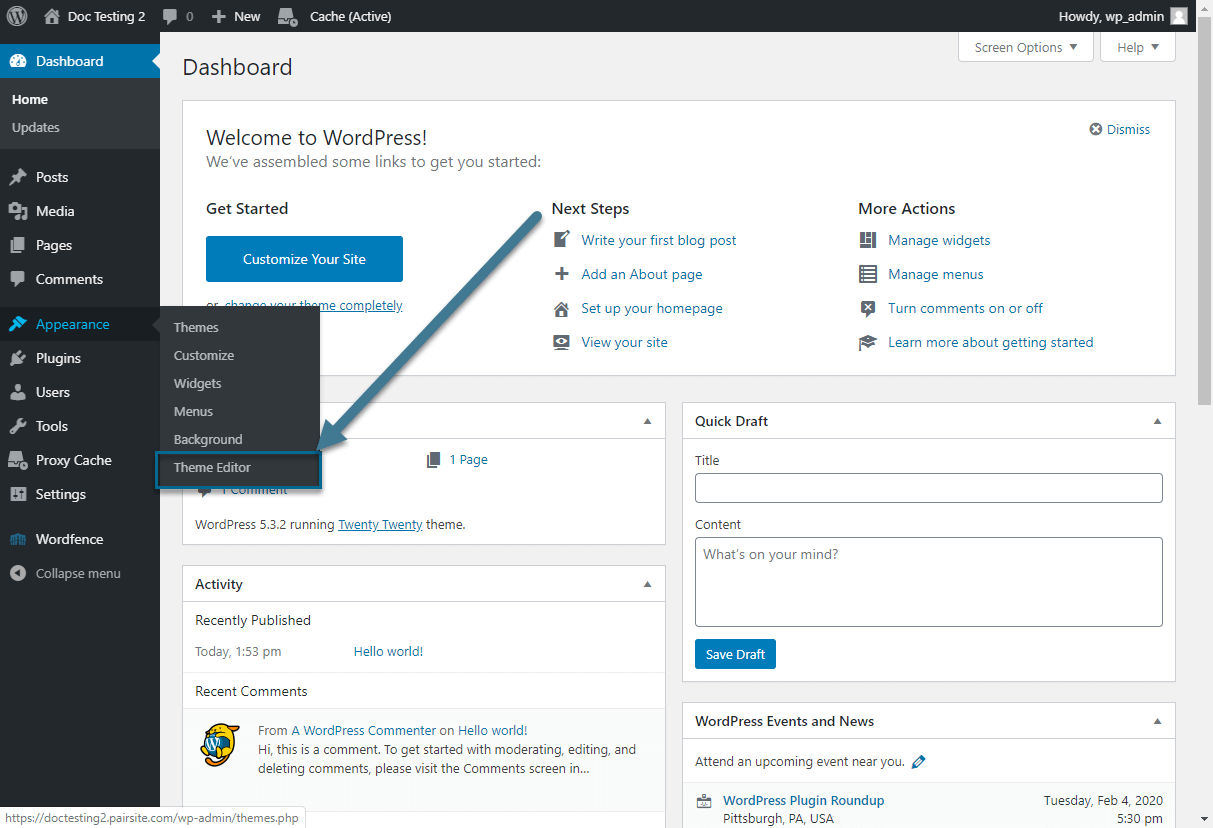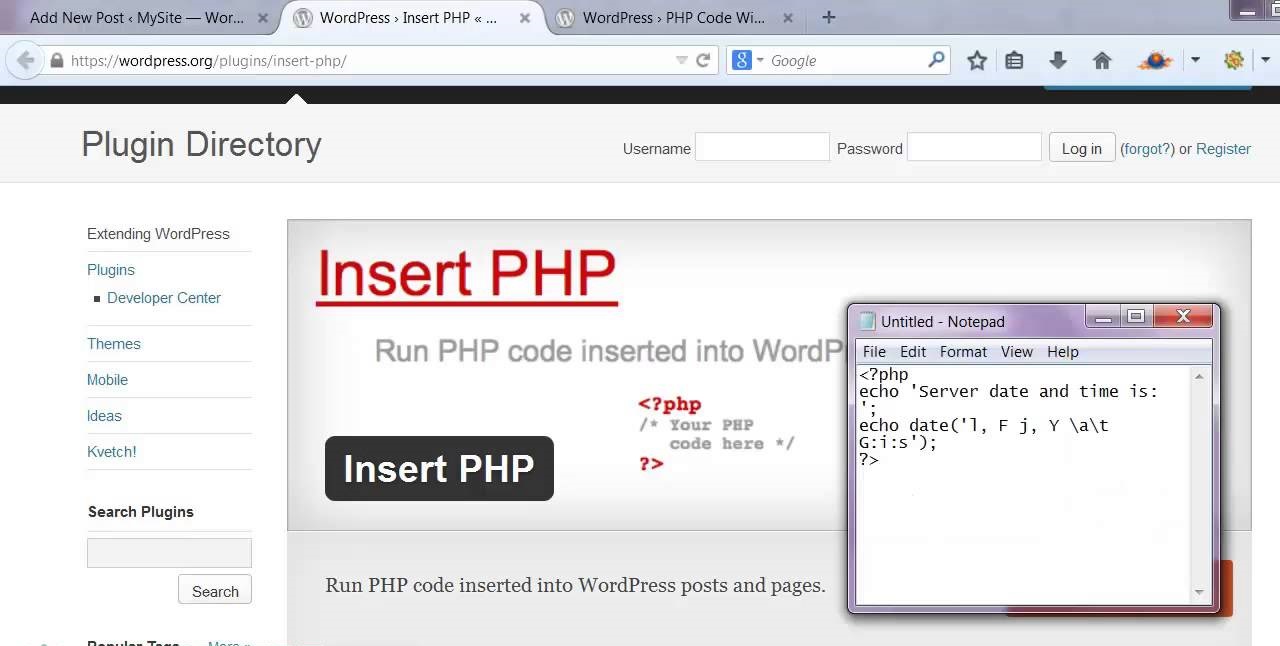Introduction
Welcome to the world of PHP editing! PHP, which stands for Hypertext Preprocessor, is a popular scripting language used primarily for web development. As an SEO writer, understanding how to edit PHP code is a valuable skill that can enhance your ability to optimize websites and improve their search engine rankings.
Editing PHP code may seem daunting at first, especially if you’re new to programming. However, with a bit of practice and guidance, you’ll soon discover that it becomes second nature. In this article, we’ll explore the basics of PHP syntax, learn common editing techniques, and delve into troubleshooting and debugging strategies.
Before we dive into the details, it’s crucial to have the right environment set up for PHP editing. You’ll need a text editor or integrated development environment (IDE) that supports PHP syntax highlighting, autocompletion, and error checking. Popular options include Visual Studio Code, Sublime Text, and PHPStorm. Choose the one that best suits your needs and preferences.
Once your editing environment is ready, it’s time to gain a solid understanding of the fundamentals of PHP syntax. PHP code is typically embedded within HTML, and it’s enclosed between opening tags. This allows for seamless integration of dynamic functionality with the static HTML structure of a web page.
Within PHP, you’ll be working with variables, conditional statements, loops, functions, and more. These building blocks enable you to manipulate data, control the flow of execution, and create reusable code snippets. It’s essential to grasp these core concepts to effectively edit and modify PHP code.
Now that you’re familiar with the basics, let’s explore some common PHP editing techniques. One of the most useful tools for editing PHP code is the echo statement. It allows you to display dynamic content on a web page by outputting values stored in variables or the results of calculations.
In addition to echo, you’ll frequently encounter PHP functions that perform specific tasks. These functions can be built-in or custom-defined, and they are crucial for accomplishing various operations, such as manipulating strings, handling form data, or interacting with databases.
As with any programming language, working with PHP code comes with its fair share of challenges. You might encounter syntax errors, logical bugs, or unexpected behaviors. Don’t worry – troubleshooting and debugging are essential skills for any PHP editor.
Throughout this article, we’ll provide tips and strategies for effectively debugging PHP code. From error reporting and logging to using breakpoints and stepping through code, you’ll learn how to identify and fix issues, ensuring smooth and error-free execution.
Last but not least, we’ll discuss best practices for editing PHP. These guidelines will help you write clean, readable, and maintainable code. Following industry-standard conventions and utilizing efficient coding techniques will not only benefit your own workflow but also contribute to the overall performance and SEO-friendliness of the website you’re working on.
Are you ready to enhance your PHP editing skills? Let’s dive in and unleash the power of PHP!
Setting Up Your Editing Environment
Before you can start editing PHP code, it’s important to have the right tools and environment set up. This ensures a seamless and efficient editing experience. Follow these steps to set up your PHP editing environment:
- Choose a Text Editor or Integrated Development Environment (IDE): Select a text editor or IDE that supports PHP syntax highlighting, autocompletion, and error checking. Some popular options are Visual Studio Code, Sublime Text, and PHPStorm. These tools provide a user-friendly interface and necessary features to enhance your PHP editing capabilities.
- Install PHP: PHP is a server-side scripting language, so you’ll need to install it on your local development environment. If you’re using a Mac, PHP is pre-installed. For Windows or Linux, you can download and install PHP from the official website. Make sure to choose the appropriate version and follow the installation instructions.
- Set Up a Local Development Server: To run PHP code, you’ll need a local development server. Apache with PHP and MySQL is a common combination known as the LAMP stack. You can install a full-fledged development environment like XAMPP or MAMP, or manually set up your server using the appropriate software packages. Ensure your server is properly configured to execute PHP files.
- Configure Your Development Environment: Once PHP and the local development server are installed, it’s essential to configure your development environment. In your text editor or IDE, set the appropriate PHP executable path, server settings, and debugging options. This ensures seamless integration between your editing environment and the web server, enabling real-time preview and efficient debugging.
- Create a Project Directory: Organize your PHP projects by creating a dedicated directory. This directory will contain all the PHP files, as well as any related assets like JavaScript, CSS, and images. Having a well-structured project directory makes it easier to locate and manage your PHP files.
By following these steps, you’ll have a fully functional PHP editing environment at your fingertips. You’ll be able to write, edit, and test PHP code efficiently, ensuring smooth development and debugging processes.
Now that your editing environment is set up, let’s move on to understanding the basics of PHP syntax.
Understanding the Basics of PHP Syntax
To effectively edit PHP code, it’s essential to have a solid understanding of its syntax. PHP code is typically embedded within HTML files using opening tags. Let’s explore some essential components of PHP syntax:
- Variables: Variables in PHP are denoted with a dollar sign ($) followed by the variable name. These variables can store various types of data, including integers, strings, and arrays. You can assign values to variables using the assignment operator (=) and access their values throughout your code.
- Conditional Statements: PHP provides several conditional statements, such as if, elseif, and else, to control the flow of execution based on certain conditions. These statements allow you to perform different actions depending on the outcome of logical comparisons or conditions.
- Loops: Loops are essential for repetitive tasks and iterative operations. PHP offers different types of loops, including for, while, and do-while. These loops enable you to execute a block of code multiple times, either based on a predetermined number or until a certain condition is met.
- Functions: Functions in PHP are blocks of code that perform specific tasks. They allow you to break down your code into reusable and modular units. PHP provides built-in functions like echo for outputting HTML, as well as the ability to define custom functions to perform specific operations.
- Arrays: Arrays are versatile data structures that can store multiple values in a single variable. PHP supports indexed arrays, associative arrays, and multidimensional arrays. You can access and manipulate array elements using various functions and operations.
- Comments: Adding comments to your PHP code is crucial for documentation and collaboration purposes. You can use single-line comments (//) or multiline comments (/* */) to provide explanations, notes, or reminders within your code.
With these basic concepts in mind, you’ll be able to navigate and understand PHP code more effectively. Remember to follow PHP’s syntax rules and conventions to ensure your code is clean, readable, and maintainable.
Now that you have a grasp of PHP syntax, let’s explore some common editing techniques that will enhance your PHP coding skills.
Common PHP Editing Techniques
Editing PHP code requires a diverse set of techniques to modify and improve its functionality. Let’s explore some common PHP editing techniques that will enhance your coding skills:
- Outputting Dynamic Content: The most basic technique is using the
echostatement to output dynamic content. You can display the value of variables, concatenate strings, or even embed HTML tags within your PHP code to generate dynamic HTML output. - Working with Strings: PHP offers a wide range of functions for manipulating strings. You can use functions like
strlento get the length of a string,substrto retrieve a portion of a string, orstr_replaceto replace specific characters or substrings within a string. - Handling Form Data: When working with forms in PHP, you can access the submitted data using the
$_POSTsuperglobal. You can sanitize and validate user input, perform calculations, or store data in a database. - Interacting with Databases: PHP provides various functions and extensions to interact with databases. You can establish a database connection, execute SQL queries, retrieve data, and update or delete records. Common database extensions in PHP include MySQLi and PDO.
- Using Conditional Statements and Loops: Conditional statements, like
ifandswitch, allow you to execute different code blocks based on specific conditions. Loops, such asforandwhile, help you iterate through arrays or perform repetitive tasks. Understanding and using these control structures proficiently is essential for effective PHP editing. - Working with Functions and Classes: PHP supports the use of functions and classes to organize and structure your code. Functions allow you to encapsulate a set of instructions into a reusable block, while classes enable you to create objects and define their properties and behaviors. Utilizing functions and classes promotes code reusability and maintainability.
By mastering these common PHP editing techniques, you’ll have the skills necessary to modify and improve PHP code efficiently. Remember to optimize your code for performance and adhere to best practices for readability and maintainability. Now, let’s move on to the next section, where we’ll explore troubleshooting and debugging strategies for PHP code.
Troubleshooting and Debugging PHP Code
Troubleshooting and debugging are essential skills for any PHP editor. Debugging involves identifying and fixing issues in your code, ensuring smooth execution and desired outcomes. Let’s explore some strategies and tools for troubleshooting and debugging PHP code:
- Enable Error Reporting: PHP provides an error reporting mechanism that helps identify syntax errors, runtime errors, and other issues. You can enable error reporting by modifying the
php.inifile or using theerror_reportingfunction in your code. This allows you to see descriptive error messages that pinpoint the exact location of the problem. - Log Errors and Debug Information: Utilize PHP’s logging capabilities to record errors and debug information. You can configure PHP to log errors to a file or display them in the browser console. This way, you can review the logs to identify the root cause of any issues and track the flow of execution in your code.
- Use Breakpoints: Breakpoints are useful for pausing the execution of your PHP code at specific points to inspect variables, evaluate expressions, and analyze the state of your program. IDEs like PHPStorm offer built-in debugging tools with support for breakpoints, allowing you to step through your code and identify problematic areas.
- Utilize Var_dump and Print_r: Var_dump and print_r are functions that display the structure and contents of variables, arrays, or objects. By using these functions strategically throughout your code, you can inspect and verify the values of variables at different stages, helping you pinpoint and understand unexpected behavior.
- Check Syntax and Scope: Syntax errors are a common cause of PHP code issues. Use PHP linting tools or enable syntax highlighting in your text editor or IDE to catch syntax errors in real-time. Additionally, check the scope of variables and functions to ensure they are accessible where they are needed.
- Debugging with Xdebug: Xdebug is a powerful PHP extension that provides advanced debugging features. It allows you to set breakpoints, step through code, inspect variables, and profile performance. Integrating Xdebug with your text editor or IDE can significantly enhance your debugging capabilities.
By employing these troubleshooting and debugging strategies, you’ll be able to identify and resolve issues in your PHP code more efficiently. Remember to approach debugging systematically and tackle one problem at a time. With practice, you’ll become adept at spotting and fixing code errors.
Now that we’ve covered troubleshooting and debugging techniques for PHP code, let’s move on to discuss best practices for editing PHP.
Best Practices for Editing PHP
When editing PHP code, it’s essential to follow best practices to ensure your code is clean, readable, and maintainable. Adhering to these practices not only enhances your workflow but also improves the performance and SEO-friendliness of the websites you work on. Let’s explore some key best practices for editing PHP:
- Consistent Code Formatting: Adopt a consistent code formatting style throughout your PHP projects. Consistency in indentation, spacing, and naming conventions improves code readability and makes it easier for others to collaborate or maintain the code in the future.
- Use Descriptive Variable and Function Names: Choose meaningful and descriptive names for your variables, functions, and classes. Clear and concise names make it easier to understand the purpose and functionality of each component, reducing confusion and enhancing code readability.
- Document Your Code: Include comments to document important code sections, explain complex logic, or clarify the purpose of certain operations. Well-documented code is easier to understand and maintain, facilitating collaboration and reducing the learning curve for other developers who may work on the codebase.
- Avoid Code Repetition: Don’t repeat lines of code unnecessarily. Instead, modularize your code by creating reusable functions or classes to perform common tasks. This promotes code reusability and reduces the likelihood of introducing errors or inconsistencies when modifying or extending functionality.
- Sanitize and Validate User Input: When handling user input, whether it’s from forms or external sources, ensure you sanitize and validate the data to prevent security vulnerabilities or unexpected behavior. Utilize functions like
filter_varormysqli_real_escape_stringto sanitize user input and validate it against specific criteria. - Manage Database Interactions: When working with databases in PHP, use prepared statements or parameterized queries to prevent SQL injection attacks. Sanitize user input and validate any data before inserting or updating the database. Avoid executing raw SQL queries using user input directly.
- Use Version Control: Incorporate version control, such as Git, into your PHP editing workflow. Version control allows you to track changes, revert to previous versions, and collaborate seamlessly with other developers. It provides a safety net and facilitates efficient team collaboration on PHP projects.
By following these best practices when editing PHP code, you’ll ensure your code is well-structured, maintainable, and secure. Consistent formatting, clear documentation, and robust security measures will make your codebase more manageable and increase its longevity.
Now that we’ve covered best practices for editing PHP, let’s conclude our journey through PHP editing techniques.
Conclusion
Congratulations! You’ve now gained valuable insights into editing PHP code. Understanding PHP syntax, setting up your editing environment, and mastering common editing techniques are essential for optimizing websites and improving search engine rankings.
By following best practices, troubleshooting and debugging effectively, and maintaining a clean and organized codebase, you’ll enhance your PHP editing skills and deliver high-quality code. Remember to document your code, use meaningful names, and adhere to consistent formatting to promote collaboration and readability.
As you continue your journey in PHP editing, keep exploring new features and techniques to stay up to date with the evolving PHP ecosystem. Stay engaged with the PHP community and leverage online resources and forums to expand your knowledge and overcome challenges.
PHP editing can be a complex task, but with practice and dedication, you’ll become proficient in modifying, enhancing, and maintaining PHP code. Whether you’re optimizing websites, building web applications, or troubleshooting issues, your expertise in PHP editing will contribute to the success of your projects.
Now it’s time to apply what you’ve learned and dive into the exciting world of PHP editing. Happy coding!







